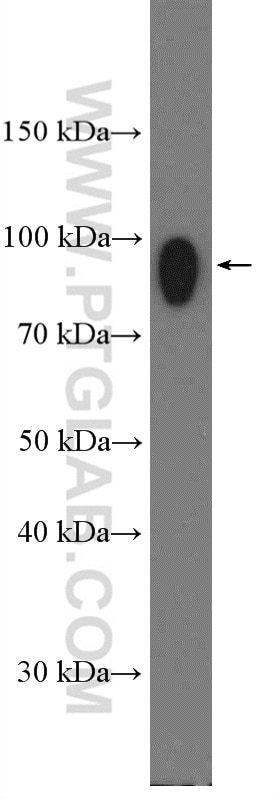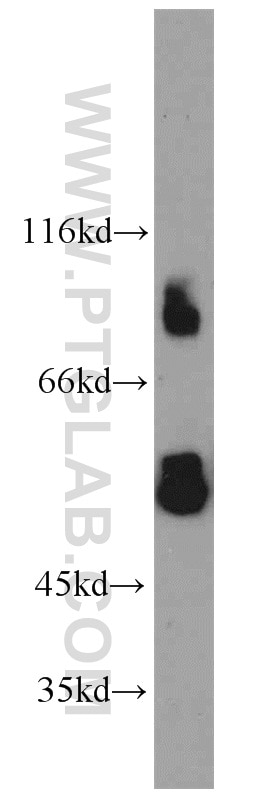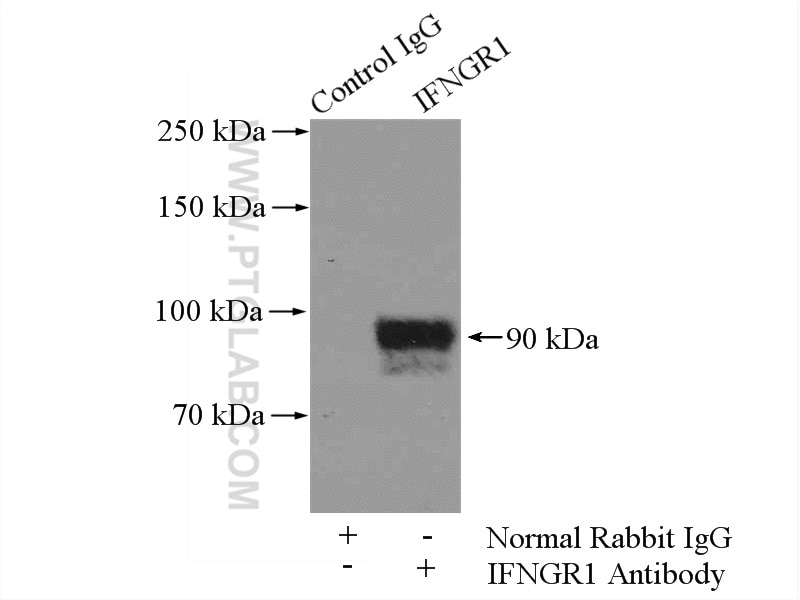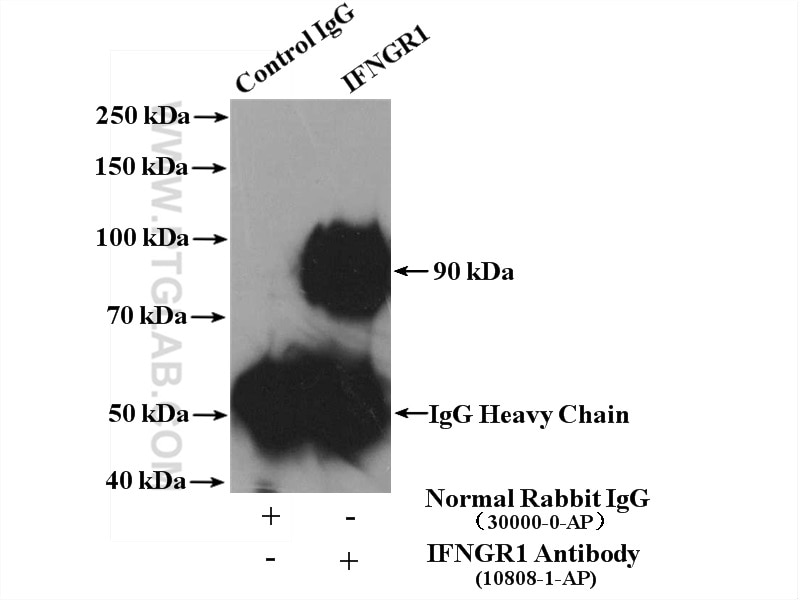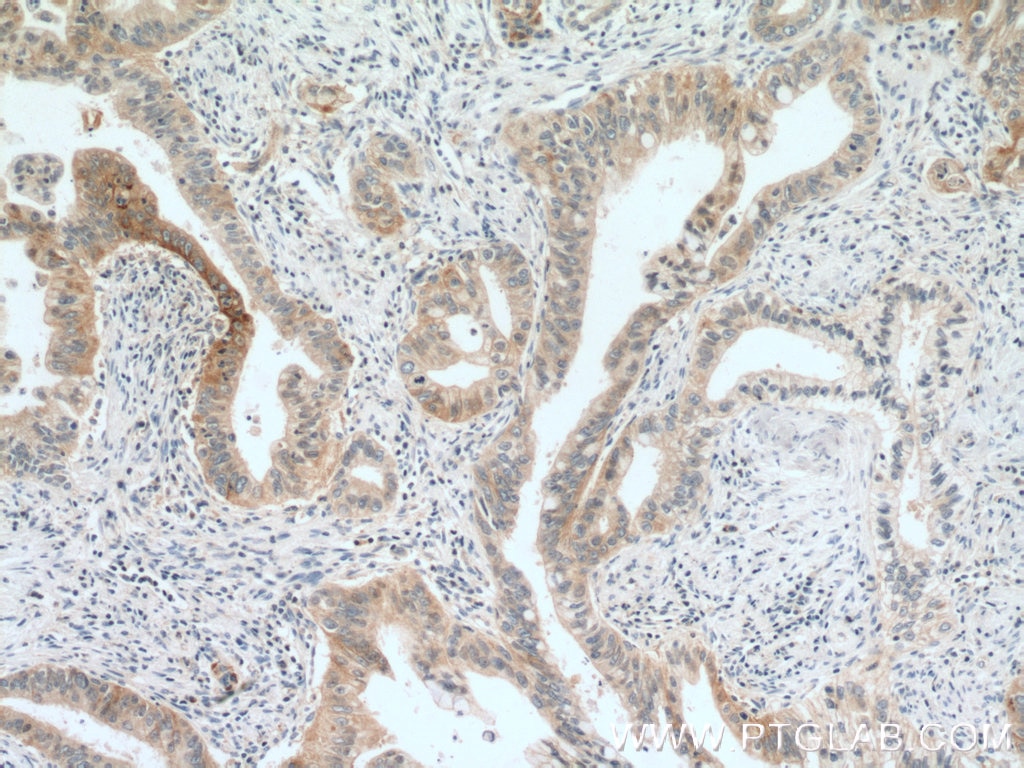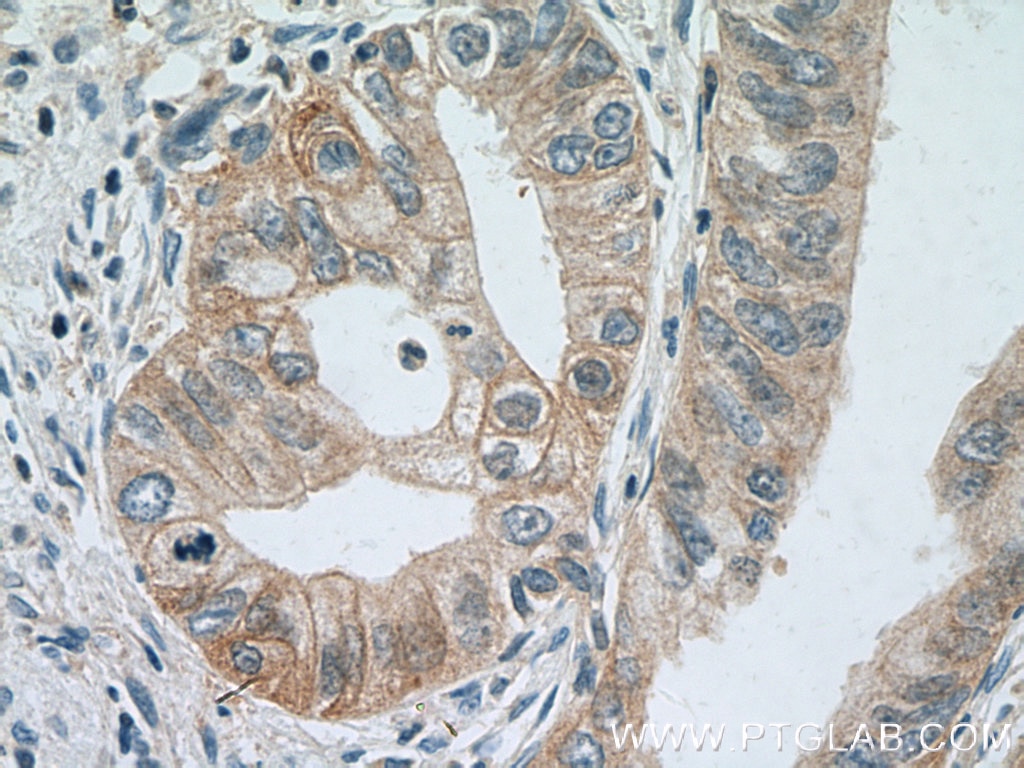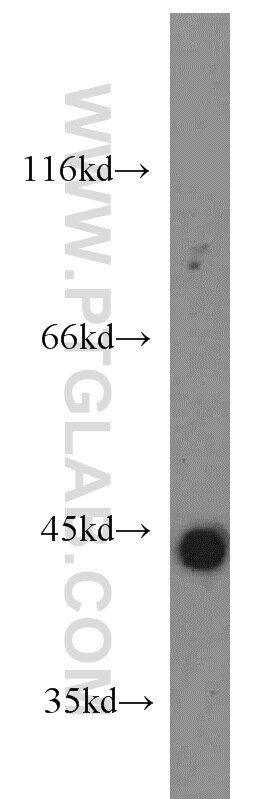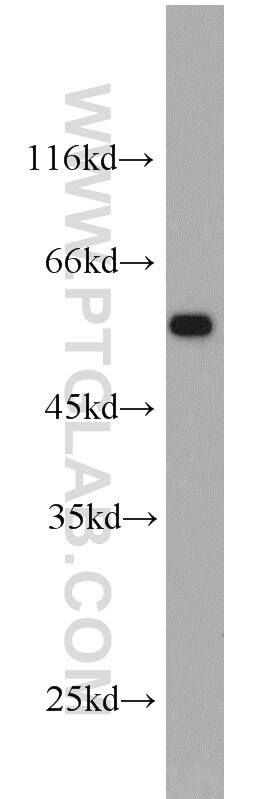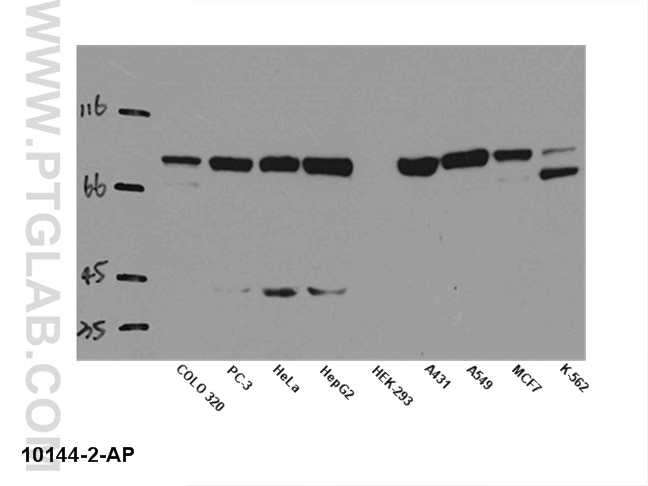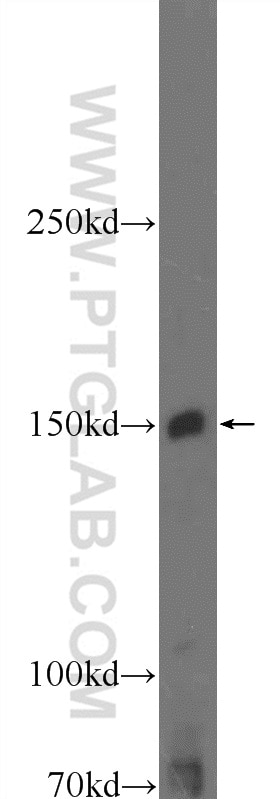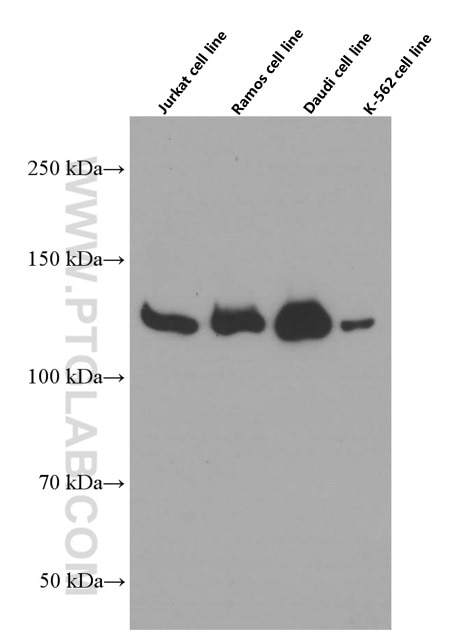- Phare
- Validé par KD/KO
Anticorps Polyclonal de lapin anti-IFNGR1
IFNGR1 Polyclonal Antibody for WB, IP, IHC, ELISA
Hôte / Isotype
Lapin / IgG
Réactivité testée
Humain et plus (1)
Applications
WB, IP, IF, IHC, ELISA
Conjugaison
Non conjugué
N° de cat : 10808-1-AP
Synonymes
Galerie de données de validation
Applications testées
| Résultats positifs en WB | cellules HEK-293, cellules HepG2 |
| Résultats positifs en IP | cellules HepG2 |
| Résultats positifs en IHC | tissu de cancer du pancréas humain il est suggéré de démasquer l'antigène avec un tampon de TE buffer pH 9.0; (*) À défaut, 'le démasquage de l'antigène peut être 'effectué avec un tampon citrate pH 6,0. |
Dilution recommandée
| Application | Dilution |
|---|---|
| Western Blot (WB) | WB : 1:500-1:1000 |
| Immunoprécipitation (IP) | IP : 0.5-4.0 ug for 1.0-3.0 mg of total protein lysate |
| Immunohistochimie (IHC) | IHC : 1:50-1:500 |
| It is recommended that this reagent should be titrated in each testing system to obtain optimal results. | |
| Sample-dependent, check data in validation data gallery | |
Applications publiées
| KD/KO | See 1 publications below |
| WB | See 9 publications below |
| IHC | See 4 publications below |
| IF | See 2 publications below |
Informations sur le produit
10808-1-AP cible IFNGR1 dans les applications de WB, IP, IF, IHC, ELISA et montre une réactivité avec des échantillons Humain
| Réactivité | Humain |
| Réactivité citée | Humain, souris |
| Hôte / Isotype | Lapin / IgG |
| Clonalité | Polyclonal |
| Type | Anticorps |
| Immunogène | IFNGR1 Protéine recombinante Ag1114 |
| Nom complet | interferon gamma receptor 1 |
| Masse moléculaire calculée | 54 kDa |
| Poids moléculaire observé | 90 kDa |
| Numéro d’acquisition GenBank | BC005333 |
| Symbole du gène | IFNGR1 |
| Identification du gène (NCBI) | 3459 |
| Conjugaison | Non conjugué |
| Forme | Liquide |
| Méthode de purification | Purification par affinité contre l'antigène |
| Tampon de stockage | PBS avec azoture de sodium à 0,02 % et glycérol à 50 % pH 7,3 |
| Conditions de stockage | Stocker à -20°C. Stable pendant un an après l'expédition. L'aliquotage n'est pas nécessaire pour le stockage à -20oC Les 20ul contiennent 0,1% de BSA. |
Informations générales
Interferon-gamam (IFN-γ) is a cytokine critical for innate and adaptive immunity against viral and intracellular bacterial infections and for tumor control. Cellular responses to IFN-γ are activated through its interaction with a heterodimeric receptor consisting of two subunits, IFNGR1 (CD119) and IFNGR2. IFNGR1 is the ligand-binding subunit which binds IFN-γ with high affinity, whereas IFNGR2 serves as the accessory subunit. Two subunits bind one IFN-γ dimer. Defects in IFNGR1 are a cause of mendelian susceptibility to mycobacterial disease (MSMD), also known as familial disseminated atypical mycobacterial infection. (PMID: 17981204; 946248; 10888113)
Protocole
| Product Specific Protocols | |
|---|---|
| WB protocol for IFNGR1 antibody 10808-1-AP | Download protocol |
| IHC protocol for IFNGR1 antibody 10808-1-AP | Download protocol |
| IP protocol for IFNGR1 antibody 10808-1-AP | Download protocol |
| FC protocol for IFNGR1 antibody 10808-1-AP | Download protocol |
| Standard Protocols | |
|---|---|
| Click here to view our Standard Protocols |
Publications
| Species | Application | Title |
|---|---|---|
Cancer Discov Loss of Optineurin Drives Cancer Immune Evasion via Palmitoylation-Dependent IFNGR1 Lysosomal Sorting and Degradation. | ||
Nat Commun DENR controls JAK2 translation to induce PD-L1 expression for tumor immune evasion. | ||
Dev Cell Interferon-γ resistance and immune evasion in glioma develop via Notch-regulated co-evolution of malignant and immune cells. | ||
Oncogene Low doses of IFN-γ maintain self-renewal of leukemia stem cells in acute myeloid leukemia
| ||
Ecotoxicol Environ Saf Silica-induced macrophage pyroptosis propels pulmonary fibrosis through coordinated activation of relaxin and osteoclast differentiation signaling to reprogram fibroblasts | ||
J Neuropathol Exp Neurol Gene expression profiling of NF-1-associated and sporadic pilocytic astrocytoma identifies aldehyde dehydrogenase 1 family member L1 (ALDH1L1) as an underexpressed candidate biomarker in aggressive subtypes. |
